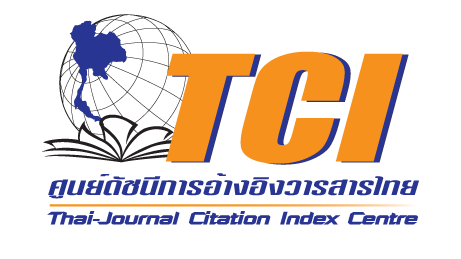การศึกษาการรับรู้ซอฟต์พาวเวอร์กีฬามวยไทย ของนักท่องเที่ยวชาวต่างชาติในกรุงเทพมหานคร
DOI:
https://doi.org/10.14456/ajmt.2025.6คำสำคัญ:
การรับรู้ , ซอฟต์พาวเวอร์, มวยไทย, การท่องเที่ยวบทคัดย่อ
งานวิจัยนี้มีวัตถุประสงค์เพื่อ 1) ศึกษาการรับรู้ซอฟต์พาวเวอร์กีฬามวยไทยของนักท่องเที่ยวชาวต่างชาติในกรุงเทพมหานคร และ 2) นำเสนอแนวทางการพัฒนาการท่องเที่ยวด้วยซอฟต์พาวเวอร์กีฬามวยไทย งานวิจัยนี้ เป็นงานวิจัยเชิงปริมาณ โดยมีการเก็บข้อมูลโดยแบบสอบถามจากนักท่องเที่ยวชาวต่างชาติจำนวน 385 คน ใช้วิธีสุ่มตัวอย่างแบบบังเอิญ มีการตรวจคุณภาพเครื่องมือที่ใช้ในการวิจัยมีค่าความตรงตามเนื้อหา และ ค่าความเชื่อมั่นเป็น 0.70 และ 0.824 ตามลำดับ ผลการวิจัยพบว่า ผู้ตอบแบบสอบถามส่วนใหญ่เป็นเพศชายอายุระหว่าง 21 - 30 ปี อยู่ในภูมิภาคยุโรป มีศึกษาในระดับปริญญาตรี อาชีพพนักงานในบริษัทเอกชน มีรายได้ เฉลี่ยต่อปีประมาณ 25,001 - 50,000 ดอลลาร์สหรัฐฯ ส่วนใหญ่รู้จักมวยไทยก่อนเดินทางมาประเทศไทย ผ่านช่องทางสื่อออนไลน์ และมองว่าเอกลักษณ์ของมวยไทย คือ ท่าทางแม่ไม้มวยไทย ส่วนมากมีความสนใจที่จะรับชมมวยไทย มองว่ากีฬามวยไทยสามารถเพิ่มสมรรถภาพทางร่างกายได้ มีระยะเวลาในการอาศัยอยู่ประเทศไทยต่ำกว่า 7 วัน และคาดหวังที่จะใช้จ่ายกับมวยไทยแต่ละครั้งน้อยกว่าหรือเท่ากับ 2,000 บาท การรับรู้ถึงซอฟต์พาวเวอร์กีฬามวยไทย โดยนักท่องเที่ยวได้รับสิ่งเร้าจากสื่อออนไลน์ การโฆษณา และการประชาสัมพันธ์มากที่สุด และมีการรับรู้ถึงสนามมวยไทยในประเทศไทย โดยตอบสนองออกมาเป็นความสนใจที่จะรับชมกีฬามวยไทย งานวิจัยนี้สามารถนำเสนอแนวทางการพัฒนาการท่องเที่ยวด้วยซอฟต์พาวเวอร์กีฬามวยไทย ได้เป็นคำว่า “MUAY THAI” M (Media), U (Uniqueness), A (Accessibility), Y (Gym), T (Things), H (Health promotion ), A (Attending), I (Inspiring)
เอกสารอ้างอิง
Bangkok Business. (2022). "Soft power" promotes Thainess through cultural products and services, an alternative for business people. https://www.bangkokbiznews.com/social/1008281
Boonjiam, D., & Puarattanaarunkorn, O. (2021). Analyzing of sports tourist behavior: Empirical study in Buriram province. Journal of Business Administration and Accountancy, 5(2), 1–15.
Cochran, W. G. (1977). Sampling techniques (3rd ed.). Wiley.
Joseph, S. (2004). Soft power: The means to success in world politics. Public Affairs.
Sukumolnan, Y., & Romket, K. (2016). History of Muay Thai. BTS Press. https://www.ibfmuaythai.com/Files/Name2/CONTENT5a289bfd7dbb8f1400a3e2ef61140659 13312528.pdf
Nye, J. S., Jr. (2005). Soft power: The means to success in world politics. Public Affairs. http://www.tinyurl.com/2b5wv9az
Poolsawat, M. (2023). Thai boxing arts: Model of learning and creative social network building. Journal of MCU Social Development, 8(1), 57–69.
Ministry of Tourism and Sports. (2023). Minister Pipat presided over the press conference for the competition "Local Muay Thai from Grassroots to the World 2023." (in Thai). https://www.mots.go.th/news/1000497
Ministry of Tourism and Sports. (2024). Annual action plan (2024): Ministry of Tourism and Sports (in Thai). https://secretary.mots.go.th/download/article/article_20231116084514.pdf
Ministry of Tourism and Sports. (2024). Summary of accommodation, visitor numbers, and revenue from visitors: January to December 2023 (in Thai). https://www.mots.go.th/news/category/705
Ong, T., & Ruzmin, W. I. b. W. (2016). Participation motivation in Muay Thai among Malaysians. In S. Ismail, N. Sulaiman, & R. Adnan (Eds.), Proceedings of the 2nd International Colloquium on Sports Science, Exercise, Engineering and Technology 2015 (ICoSSEET 2015) (pp. 103–108). Springer. https://doi.org/10.1007/978-981-287-691-1_13
Promthan, P., & Jiwchinda, C. (2023). Adaptation of Muay Thai businesses and trainers in the COVID-19 pandemic. Journal of Social Innovation, 6(2), 57–71.
Rakkadecha S. (2022). The legend of Muay Thai. Journal of Arts and Culture of the Mun River Basin, 8 (2013), 93–96.
Ratanasuwongchai, N. (2011). Cultural tourism development strategies. Journal of Studies in the Field of Humanities, Faculty of Humanities, Kasetsart University, 18(1), 31–50.
Sawatchan, W. (2021). Sports tourism business management in Thailand: A case study of the manager of the Bangsaen Marathon [Unpublished Master’s individual study]. Mahidol University.
Siwapat, S. (2006). General psychology. Odeon Store.
The Government Public Relations Department. (2024). Foreign tourists traveling in Thailand in 2023 accumulated more than 27 million people. https://www.prd.go.th/th/content/category/detail/id/9/iid/246427
The Government Public Relations Department. (2024). Preparing to launch a special visa for tourists to train in Muay Thai for 90 days. https://trat.prd.go.th/th/content/category/detail/id/57/iid/252095
The National Broadcasting Services of Thailand. (2024). Revealed the number of Thai tourists in 2023, exceeding 28 million people, total income of 54,400 million baht. https://nbt2hd.prd.go.th/th/content/category/detail/id/2153/iid/246822
Thosrikaew, B. (2014). Soft power-hard power. https://www.thairath.co.th/content/401926
Ueapairojkit, R. (2022). The use of soft power to promote international relations: A case study of the Indian Council for Cultural Relations (ICCR) [Individual Study, Ministry of Foreign Affairs of the Kingdom of Thailand]. https://image.mfa.go.th/mfa/0/yZ0EO327fd/เอกสาร/nbt/nbt14/IS/14023.pdf
World Tourism Organization of United Nations (UNWTO). (2019). Sports tourism. https://www.unwto.org/sport-tourism
ดาวน์โหลด
เผยแพร่แล้ว
รูปแบบการอ้างอิง
ฉบับ
ประเภทบทความ
สัญญาอนุญาต
ลิขสิทธิ์ (c) 2025 คณะเทคโนโลยีการจัดการ มหาวิทยาลัยเทคโนโลยีราชมงคลอีสาน วิทยาเขตสุรินทร์

อนุญาตภายใต้เงื่อนไข Creative Commons Attribution-NonCommercial-NoDerivatives 4.0 International License.
บทความที่ได้รับการตีพิมพ์เป็นลิขสิทธิ์ของคณะเทคโนโลยีการจัดการ มหาวิทยาลัยเทคโนโลยีราชมงคลอีสาน วิทยาเขตสุรินทร์
ข้อความที่ปรากฏในบทความแต่ละเรื่องในวารสารวิชาการเล่มนี้ เป็นความคิดเห็นส่วนตัวของผู้เขียนแต่ละท่านไม่เกี่ยวข้องกับคณะเทคโนโลยีการจัดการ มหาวิทยาลัยเทคโนโลยีราชมงคลอีสาน วิทยาเขตสุรินทร์ และคณาจารย์ท่านอื่นๆในมหาวิทยาลัยฯ แต่อย่างใด ความรับผิดชอบองค์ประกอบทั้งหมดของบทความแต่ละเรื่องเป็นของผู้เขียนแต่ละท่าน หากมีความผิดพลาดใดๆ ผู้เขียนแต่ละท่านจะรับผิดชอบบทความของตนเองแต่ผู้เดียว










